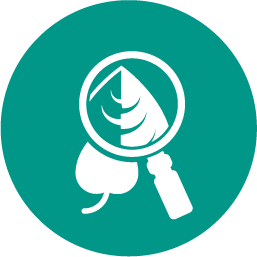
Unit 1: nature of life
1. science differs from other disciplines, such as history and the arts, because science relies on .
• facts
• testing explanations
• observations
• theories
2. a scientific hypothesis
• can be based on personal beliefs or opinions
• can be tested by experiments or observations
• does not have to be tested to be accepted as correct
• is a proven fact with much evidence to support it
3. how does studying science you be a better member of society?
• learning the biases of science will you know what is right or wrong.
• understanding how science works will you make better decisions.
• memorizing science facts will you become more intelligent.
• knowing science will you live without the aid of technology.
4. which of the following describes a neutral atom of oxygen?
• 6 protons, 6 neutrons, 6 electrons
• 6 protons, 6 neutrons, 8 electrons
• 8 protons, 8 neutrons, 10 electrons
• 8 protons, 8 neutrons, 8 electrons
5. hershey and chase used the 35s isotope to label proteins. how does this isotope differ from the 32s isotope found in greatest natural abundance, and why did they choose 35s instead of 32s? (1 point) (hint: what is an isotope of an element and keep in mind what hershey and chase needed their “labeled” protein to do)
• 35s has more protons than 32s; hershey and chase used it because it has a greater mass.
• 35s has fewer protons than 32s; hershey and chase used it because it is radioactive and can be easily traced.
• 35s has more neutrons than 32s; hershey and chase used it because it is radioactive and can be easily traced.
• 35s has fewer neutrons than 32s; hershey and chase used it because it has a smaller mass.
6. rank the following in order from most acidic to most basic
• rainwater, coffee, bleach, soap
• coffee, rainwater, soap, bleach
• soap, bleach, coffee, rainwater
• bleach, soap, rainwater, coffee
7. which of the following are true concerning living things? check all that apply. (2 points)
• they contain a vital force absent in nonliving things.
• they are composed of molecules that contain carbon-carbon bonds.
• they undergo chemical reactions to use energy they acquire from the environment.
• they do not require catalysts to sustain their living state.
8. which of the following does not match: the monomer makes up the polymer
• amino acids, protein
• fatty acids, dna
• glucose, starch
• ribonucleotide, rna
unit 2: cells
9. which organelles are involved in energy transformations, such as photosynthesis and cellular respiration?
• mitochondria and chloroplasts
• mitochondria and ribosomes
• smooth and rough endoplasmic reticulum
• golgi apparatus and chloroplasts
10. what happens if you put cells in a concentrated salt solution?
• they shrink as water moves from inside to outside the cells as a result of osmosis.
• they burst as water moves from outside to inside the cells as a result of osmosis.
• no change occurs as water freely diffuses back and forth across the cell membranes.
• the cells expend energy pumping water out in response to the greater external salt concentration.
11. what happens during photosynthesis?
• heterotrophs consume atp.
• heterotrophs produce atp.
• autotrophs consume carbohydrates in the form of glucose.
• autotrophs produce carbohydrates in the form of glucose.
12. which chemical shown in figure 8–3 is an electron carrier molecule (the ‘hot potato’ that ‘carries’ electrons)?
• h2o
• carbon dioxide
• nadp+
• oxygen
13. which of the following is not a step in the light-dependent reactions? (look at the diagram above)
• high-energy electrons move through the electron transport chain.
• pigments absorb light.
• atp synthase allows h+ ions to pass through the thylakoid membrane
• atp and nadph are used to produce high-energy sugars (glucose).
14. cellular respiration releases energy by breaking down
• food molecules
• atp
• carbon dioxide
• water
15. what are the reactants (ingredients) in the equation for cellular respiration?
• oxygen and lactic acid
• carbon dioxide and water
• glucose and oxygen
• water and glucose

Answers: 1


Another question on Biology

Biology, 21.06.2019 17:30
What do animals wth echolocation have in common other than echolocation
Answers: 1

Biology, 22.06.2019 06:00
How can you tell the difference between rough er from smooth er?
Answers: 2

Biology, 22.06.2019 09:00
The blue particles in this image are able to cross the cell membrane through simple diffusion. how will they be transported? outside the cell inside the cell o a. the substances will move directly across the membrane from outside the cell to inside the cell. b. the substances will move through channels in the membrane proteins from outside the cell to inside the cell. o c. the substances will move through channels in the membrane proteins from inside the cell to outside the cell. o d. the substances will move directly across the membrane from inside the cell to outside the cell.
Answers: 2

Biology, 22.06.2019 10:00
Rarefaction is used for which of the following? a. creating a representative sample b. studying how disease impacts populations c. rediscovering species thought to be instinct d. determining which sea creatures live in an area
Answers: 1
You know the right answer?
Unit 1: nature of life
1. science differs from other disciplines, such as history and...
1. science differs from other disciplines, such as history and...
Questions






Computers and Technology, 21.01.2020 18:31

History, 21.01.2020 18:31





English, 21.01.2020 18:31


English, 21.01.2020 18:31


Mathematics, 21.01.2020 18:31

History, 21.01.2020 18:31

Spanish, 21.01.2020 18:31

English, 21.01.2020 18:31



